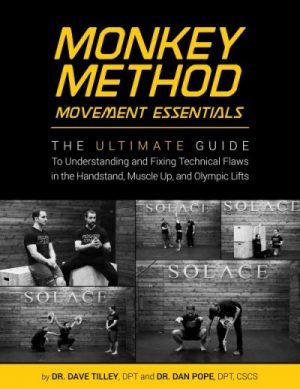Gaining new overhead mobility seems to be an elusive thing. We all want it so we can snatch, kip and jerk like all-stars, however few seem to get there. What gives? In my experience gaining new motion can be very challenging but if we follow specific principles it can make it much easier. Here’s my process for improving motion.
1: Identify a Problem
I know this may sound really stupid but first you’ll want to measure your overhead mobility and see if there is actually a limitation. Not being able to overhead squat well doesn’t mean you have a shoulder mobility problem so we need to make sure this is actually an issue before addressing it.
2: Identify Restricted Tissues and Joints
If people are lacking overhead mobility it can be restricted for a variety of reasons.
- Thoracic Spine Restriction
- Lat / Teres Major Soft Tissue Restrictions
- Pec Restrictions
- Lack of scapular upward rotation and posterior tilt
3: Find the Right Exercises, Mobilizations and Manual Therapies for You
Our goal is to make a change in your range of motion. The tricky part is making an actual change in the tissue and or joints. If we identify a lat restriction but find that foam rolling makes absolutely no change in your motion, it may be time to try a different intervention. Keep in mind that sometimes finding a therapist to help you with manual techniques can make a big difference. Here are some of my favorite interventions to try with another assessment included:
4: Reinforce Your New Range of Motion
New range of motion is generally pretty weak. Sometimes it’s so weak that we can’t actually fight gravity effectively. Sometimes your body isn’t even aware that you have that new range of motion. Our job is to teach our body this is motion that we want to utilize and make permanent. We need low level drills to make this happen. Here are a few good ones to help:
5: Make it Specific
Once you’ve gone through all of the steps so far, we need to start gaining strength at end range of motion with movements that are specific to what we want to get back to.
This drill I got from Dave Tilley from shiftmovementscience.com It’s great because it’s specific to handstand work but compressing the thighs to your chest forces motion from your thoracic spine and shoulders and not the lumbar spine.
6: Transfer Your New Motion Over to Your Skills (Jerk, Overhead Press, Kipping, Handstands etc.)
Your body is prone to building habits. If you decide to mobilize your shoulder and then go straight into handstand work, chances are you aren’t going to use that new motion. You’ve built habits around your old motion. All of your strength is in your old technique. It’s going to take time and deliberate practice in order to make long term changes. Make sure you’re fighting to use that new range of motion with every rep, even if your strength fades in the short term it should improve in the long term.
Want more assessment techniques and strategies to improve your mobility? Check out my latest assessment and correction digital product:
Monkey Method – Movement Essentials
The Ultimate Guide to Understanding and Fixing Technical Flaws in the Handstand, Muscle-up and Olympic Lifts
It took exactly 5 degrees of shoulder mobility to write this article,
